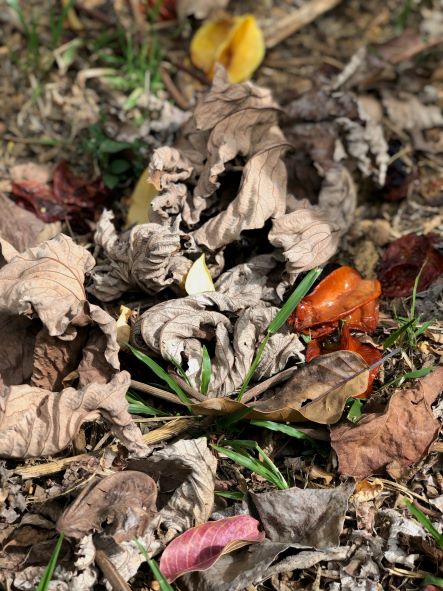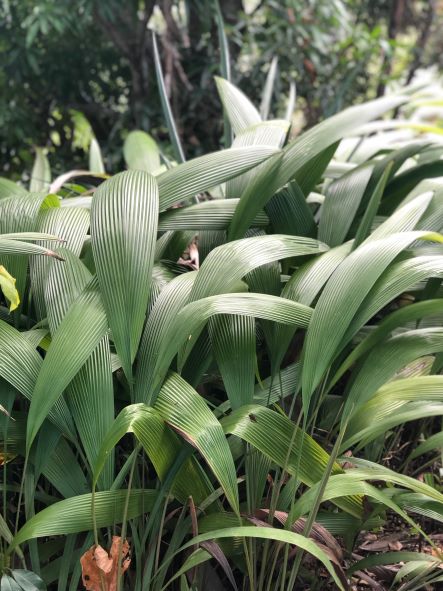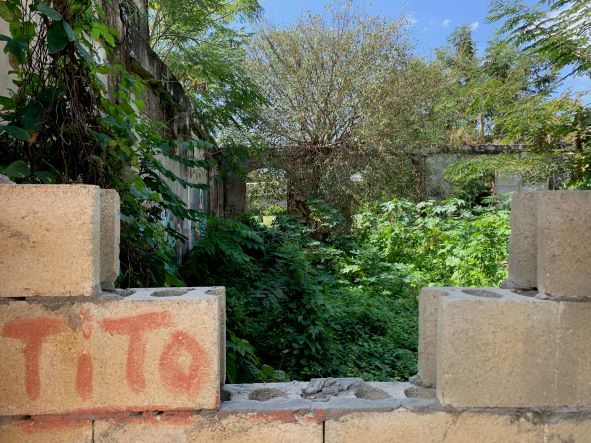
28.02.2022
raquel salas rivera tells the story of a plant, the mimosa púdica. how is it possible to surrender to the touch of an uncertain world? in this poetic gesture, the intelligence of the plant skin mints the right to life as a caress.
lepus americanus
on the cusp of my solar return, at almost 36, i live, despite the statistics that condemn me, without knowing many trans people my age, and i dedicate this to all the other snowshoe hares.
in the past few years, capitalism has deprived me of my griefs. i keep losing the war, but that loss is intelligence, that of trees that do not burrow legible routes, but rather logics of earth, worm, serpent, humidity, mushroom, goose, chicken, chick, moss, cable, condominium. this branch is the exact branch for this air, this angle is the exact angle for this world. the metaphor of grass growing in cement cracks is often used to point to that which persists, but this grass does not rise out of resistance. it rises from adaptation. it is intelligent in its survival. it grows where it can. it adapts to cement as it adapts to rain. it is not a sign of anything. it is not an omen from the great beyond. it is plant intelligence, the intelligence of curvature. it recognizes plastic, a broken bottle, the condom’s latex, only as another kind of earth, another being it can gather around.

i initially wanted this to be an essay, but essays organize human intelligence, and the tree’s intelligence is a disorganizational force. only loques, locos, and locas lose the war,[1] write against writing. i insanely offer you a very particular story about a very particular tree, but like all trees, ultimately, an antesapiens tree. this tree was a kind of hare[2] that lived in a very very hostile climate. all the other animals wanted to eat this hare that ran and ran and grew legs-shoes for the snow and snow-disappearance color and became a tree, blending into nothing so as not to be prey. sometimes it wanted to die. this is where our story gets sad and hopeful, for this intelligent hare developed anxiety and depression and all kinds of hurt, until its body started sending the message DON’T HAVE BBS and had fewer babies and then (this is the craziest and most intelligent part) these were born with the transferred command not to reproduce. well, what happened? the hare population dropped so drastically that predators were left with nothing to eat and were forced to travel to faraway lands in order to find any prey, and, during these migratory and rotational periods that lasted more or less seven years, the hares had enough time to for their numbers to grow. of course, eventually their predators caught on to the rise and moved back and the hares ran and, traumatized and depressed, stopped reproducing, telling their babies not to make more, and the predators starved and moved away.
they were very very intelligent, these hares, and didn’t even know it. they were tree.
they were surviving even while dying, in the deepest of memories, surviving, leaving behind the history of survival.
even without words, seeming crazy and suicidal, they were intelligent, they were leaving a legacy, even as they seemed a vanishing species, impossible, more snow than hare, more cement than tree trunk, they were surviving. even as they seemed to cling to the edge of the cliff, they were tree, their intelligence was a path of absences, the wisdom of madness,[3] hollows forming tracks we follow.
mimosa pudica
touch tends to be classified as behavior. from the prefix com- (with), port (to carry), and ment (instrument, means, result), to get along, to carry along completely with a corillo is a punitive impossibility. when to touch, not to touch, where and for how long is sometimes more a matter of decorum than shared desire.

in 1873, w. pfeffer[5] felt the urge to learn from the plant intelligence housed in the mimosa pudica, commonly known in puerto rico as the moriviví. i don’t blame him. as a child i, too, used to lie down among ants and touch the thorny plant whose leaflets closed in a gesture that communicated without forming words. pfeffer learned a great deal, this man of scientific reason, from plant touch. first, he learned he had to wait a while before touching the moriviví twice, not only for it to reopen but also for it to react again by closing its curtains. if the death was too recent, the little plant understood that danger wasn’t as imminent and relaxed, revived, relived. why wasn’t it more afraid after the unexpected touch? because it had learned that this touch was not a threat. because it had learned by touching, or rather, by being touched.
in 1965, holmes and gruenberg[6] wanted to know if this knowledge was only rooted in time (the most recent touch is the safest) or if it was more complex, more specific. they used two types of distinguishable touch to see if the plant could distinguish. the first: a drop of water. the second: a fingernail. the results? the moriviví no longer closed with the drop, because it had grown accustomed to the rain’s piercing water, but when it felt the fingernail for the first time, after drops and drops and acclimations, it curled up. they learned two things from this experiment. first, that the mimosa pudica did not experience pudoris or shame with all touch. it remembered not only frequency but the entire combination, like a fingerprint, of pressure, sharpness, texture, and who knows what, that make up the stimulus from a drop of water. secondly, they learned that trust, not closing when touched, was not the result of exhaustion, but a decision that corresponded directly to the encounter.
i mentioned that these leaves are curtains and, just as you change the curtains if the breeze doesn’t descend from the mountain as expected, if you want to spy more clearly who is parked on the sidewalk in front of your house, or if you want to change the room’s mood, this is how the moriviví adjusts to touch, with more instinct than protection, more wool than armor. its great gear are its sensitive leaves and some thorns that are more decorative than sharp. its big reaction to the dangers offered by celestial or human storms is tenderness, a gesture of refusal, turning its back. it is a strange trust belonging to a creature that is known for being distrustful. it waits for touch before deciding whether to close itself off. it does not live closed in. it lives exposed to any impact, attack, destructive force. its centipede wings in chlorophyll, open, offering the world an embrace.
wings of holy water
in the first chapter of his book plant behaviour and intelligence, anthony trewavas writes that “the basic problem with plant behavior is its difficulty in general detection.” they evade our vigilance. he argues that plant intelligence does not have to be conscious or centralized to constitute intelligence and that it cannot be reduced to a series of mechanical reflexes (animal-clocks or plant-levers). in an unusual gesture, trewavas explores the relationship between pleasure and cultivation, and thus between pleasure and intelligence. he calls it kinship,[7] a word that indicates a closeness deeper than that of a friendship and that isn’t linked to the nuclear family with its proprietary aspirations. it is easy to forget that medicines come from that plant kin, after it is abstracted in laboratories, and easy to forget that they contain those previous bodies of knowledge that were once stored in the roots, the pistils, the leaves, the petals, the thorns, the stem of green.
my mother has been cultivating the same garden since i was fifteen. she has access to books on agriculture, to accumulated knowledge, to weather forecasts. it’s true that the utuado campus may cease to exist because of the junta’s budget cuts, it’s true that developers will transform the basic structures of land and sea, that climate change will continue to erode us, but i know that she would still be able to get all the necessary information in order to better grow her garden. i think she doesn’t do more research because she likes to learn as she grows, to develop a direct relationship. it’s the difference between reading psychology books and relating directly. books are stories told by those who lived them. my mother knows that sometimes the plants are sad and unresponsive, even under the most perfect conditions.
she also knows that sometimes they survive where there wasn’t enough water, food, or protection because they are loved.

Jack Halberstam, The Queer Art of Failure. (Durham: Duke University Press, 2018).
Nature, “Remarkable Rabbits,” PBS Learning Media, 35 minutes, April 8, 2020, https://www.pbs.org/wnet/nature/remarkable-rabbits-preview-4djehc/21389/
Ibid. “There is something about the power of predators that draws us in, but sometimes those that seem like the disposable extras in the scene, the innocent and vulnerable secondary characters are just as captivating. In fact, sometimes they are the real stars of the show.”
Ibidem. “The young bear that signature, these ghosts of predators past, in their biology, in their growth, in their reproduction.”
W. Pfeffer, The Physiology of Plants trans. Alfred J. Ewart (Oxford: Clarendon, 1906).
E. Holmes and G. Gruenberg, “Learning in Plants,” Worm Runner’s Digest 7 (1965): 9-12.
See: Octavia Butler, Kindred (Boston: Beacon Press, 2003).
Victor Jara, “Manifiesto”, 1973, track 1 on Manifiesto, Warner Music Chile, 1974.
Ibid. “Canto porque la tierra tiene sentido y razón. / Tiene corazón de tierra y alas de palomita. / Es como el agua bendita, santigua glorias y penas.” [“I sing because the earth makes sense and has reason. / It has a heart of earth and little dove wings. / It is like holy water, it sanctifies glories and sorrows.”]
Comments
There are no coments available.